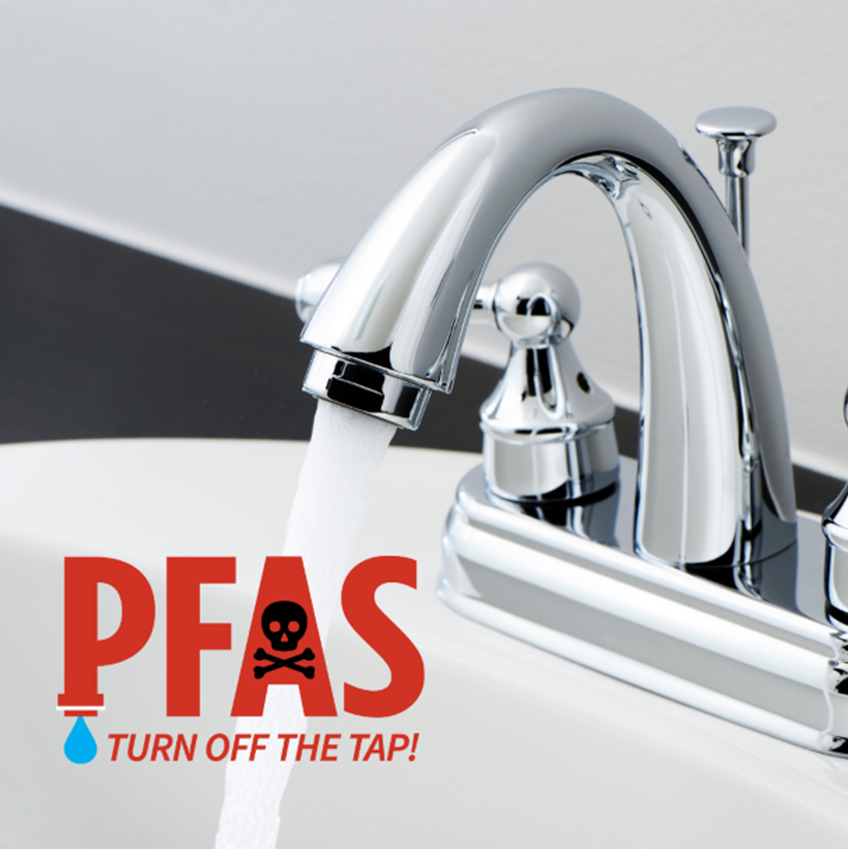
On this Earth Day, I can’t help but think about the ideas that motivated the first Earth Day in 1970, about how far we have come, and about how much-unfinished business we have to ensure that this planet – our life-support system – is healthy for all of its inhabitants. In 1970, we didn’t have a Safe Drinking Water Act or a Clean Water Act, and we couldn’t have imagined the advances we have made in understanding the human health and ecosystem risks of toxic chemicals.
When the Environmental Protection Agency (EPA) finalized the first-ever drinking water limits for some PFAS chemicals in early April, we called it a win, and noted that it was welcome and a wake-up call. What’s behind this alliterative reaction?
Why has this large class of chemicals garnered such concern? PFAS (per-and poly-flouroalkyl substances) are a class of human-made chemicals in use since the 1950s. While people often know about their use in non-stick cookware or fire-fighting foam, their use has grown exponentially in the last several decades. They are widely used in many common consumer products, including carpets, clothing, cookware, cosmetics, and food packaging. PFAS chemicals are highly persistent and mobile in the environment, which means they bioaccumulate and travel unchanged through streams, rivers, and other water bodies, including drinking water sources. That’s how they got the name “forever” chemicals. They don’t break down and they don’t go away.
PFAS are linked to serious health problems including damage to liver, thyroid, and pancreatic function, immune system harm, hormone disruption, high cholesterol, and cancer. These health impacts occur at very low levels. They have been found in water bodies around the country. PFAS manufacturers, industries that use PFAS chemicals to make other products, and facilities that use large amounts of fire-fighting foam have caused contaminated sites in many communities. PFAS can get into water, including drinking water sources, from these activities but also through daily movement and use of products containing them.
Because we know PFAS chemicals are present in drinking water sources and that they pose risk to people’s health, it’s a win that there are now Safe Drinking Water Act limits for some of these chemicals. And because the clean-up levels for contaminated sites are tied to these limits, EPA’s action was welcome as a promise kept by the Biden administration to communities struggling with contaminated sites around the country.
The new drinking water limits, some set at the lowest level that can even be measured – in the parts per trillion – are also a wake-up call. We have to stop ongoing PFAS pollution, prevent further manufacture and use, and not solely rely on drinking water systems to remove them. That is a very costly way to deal with this problem, and EPA estimates that at most only 20% of our exposure comes from drinking water. That’s why Clean Water Action is working at the state level on innovative policies to keep PFAS chemicals out of the environment in the first place.
Some examples:
In California, we’re working to pass the Ending Forever Chemicals Act, a groundbreaking bill that would prohibit the sale and distribution of any non-essential products that contain PFAS in California.
In Connecticut, we’re supporting An Act Concerning The Use Of PFAS in Certain Products, which would require manufacturers to disclose PFAS chemicals in products and ban many uses, including in cleaning products, apparel, textiles, children’s products, cosmetics, turnout gear, cosmetics and others.
In Massachusetts, we’re working to pass An Act to protect Massachusetts public health from PFAS, which would ban PFAS chemicals in certain consumer products, reduce industrial wastewater pollution, and provide funding for drinking water monitoring in public water systems and private wells.
In Minnesota, Clean Water Action worked tirelessly to pass the strongest PFAS bill in the nation to date. Signed into law in May 2023, the PFAS bill bans all non-essential PFAS uses and requires manufacturers to disclose PFAS in products sold in Minnesota.
In Pennsylvania, we engaged with the Pennsylvania Department of Environmental Protection’s process to establish drinking water standards for two PFAS chemicals - PFOA and PFOS. States can set SDWA limits that are stricter than federal regulations, or where federal regulations do not exist, but Pennsylvania had never done so before, reflecting the elevated concern over these chemicals in drinking water. Now we are working with state legislators to develop language for bills that would ban PFAS-laden firefighting foam and PFAS in select consumer products.
In Rhode Island, we’re mobilizing in support of the Comprehensive PFAS Ban Act of 2024, which would ban PFAS use in many common products and protect communities where PFAS is used in manufacturing.
Passing the burden of cost and health risks on to our communities’ drinking water systems and to all of us is not a long-term solution to the PFAS problem. We need aggressive action to stop PFAS contamination, which inevitably will include eliminating use of these chemicals in many applications. Clean Water Action was founded around principles of pollution prevention and of making sure polluters pay for the damage they have done, and that will continue to motivate our work to address PFAS chemicals.


